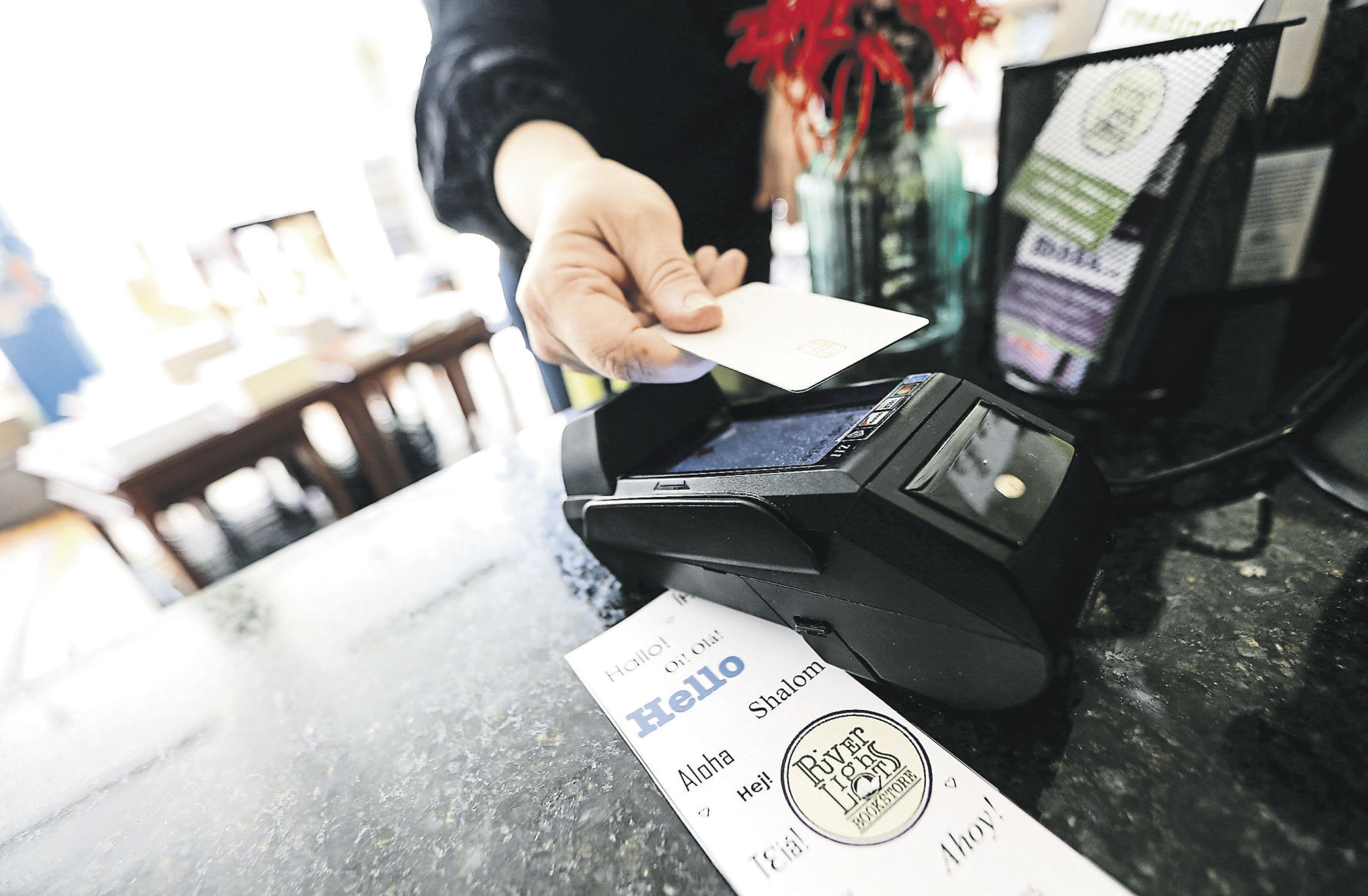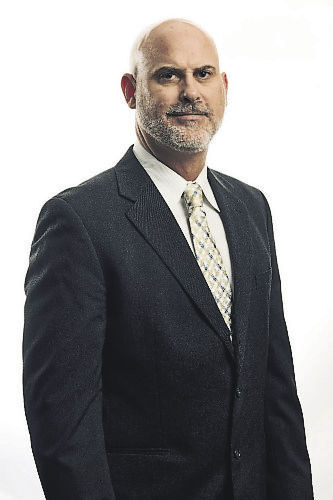Cryptocurrency is a computer-generated file designed to be a completely digital store of value that isn’t connected to anything tangible in the real world.
Bitcoin, the first cryptocurrency was launched in 2009. Today, there are thousands of crypto options including Ethereum, Litecoin and Bitcoin Cash, which are offered on PayPal.
“At the present time, the limitation with the vast majority of crypto currency is that it is not ‘tied’ to any established monetary benchmark like the U.S. dollar. So the value fluctuates sometimes quite wildly. This in turn does not bode well for day to day use. For speculation and short-term investment-perhaps. For stable payments-not so much,” said Todd J. Link, chief risk officer at Dupaco Community Credit Union.
“For crypto to replace physical currency would mean that deposits are insured, values only fluctuate to the standard U.S. dollar and the Federal Reserve would back the transactions”
“Many of the crypto players today are technology experts but they are not NCUA or FDIC insured institutions. Nor, are they examined and regulated by the leading government agencies which is the value of the traditional payments stream today.”
“Replacing a monetary system has global implications,” Jim Kelly, chief marketing officer at GreenState Credit Union, said. “GreenState has no immediate plans to accept cryptocurrency. But, 10 years ago we probably would have laughed at the idea of accepting a deposit that is actually a photo of a check sent from a phone. Times are changing rapidly.”
Electronic payments became a reality in 1998 when what we now know as PayPal was founded as Confinity. Technology entrepreneurs Ken Howery, Luke Nosek, Max Levchin and Peter Thiel founded the company on the premise of low-cost, almost effortless digital payments for consumers and businesses.
Small businesses, online merchants and consumers adopted this payment format. Confinity handled more than $3 billion in payments from 10.2 million individual consumers and 2.6 million commercial customers within three years of opening its doors.
In 2000, the founders renamed their company PayPal, after a decision was made to focus only on payments made over the flourishing internet.
PayPal became eBay user’s first choice for money transfers when eBay acquired PayPal in 2002.
By 2008, during PayPal’s first decade, the app hit 150 million users.
In 2013, PayPal acquired payments gateway company Braintree Systems, owner of Venmo, an online payment competitor.
Carl Icahn, a major PayPal shareholder demanded that the company separate from eBay. The split occurred in 2014. On the day PayPal’s stock began trading; the company’s market value crests at a whopping $49 billion instantly creating many, many PayPal millionaires.
PayPal accelerated the handling international payments in 2015 by purchasing Xoom.
Ten popular payment apps
Google Pay – for Android users
Apple Pay – for Apple users
Samsung Pay – for Samsung devices
PayPal –for low-fee transactions
Xoom – to send money to other countries
Circle Pay – to send money to other countries
Venmo – for sending small amounts of money
Square Cash – for sending small amounts of money
Zelle – for credit union members
Facebook Messenger – for no-fee transactions and Facebook users
Sources: thestreet.com and moneyunder30.com
Could George, Abraham, Alexander, Andrew, Ulysses and Benjamin soon be “history?”
The actual question should be — are we moving toward a cashless society and what could this mean?
Weighing in
“The United State continues to see a gradual decline in the use of cash,” said Todd J. Link, chief risk officer at Dupaco Community Credit Union. “Cash, especially for larger dollar payments, continues to be replaced by other payment types including debit cards, credit cards, online bill and person-to-person payments.
“But is cash going away, any time soon? The answer is a resounding ‘No.’”
Link said that cash will continue to be a popular choice for decades to come.
“Presently we see the highest use of cash in purchases under $10. Card use both debit and credit continue to see annual increases. In fact, in many age groups, carrying cash has become almost a foreign concept. People age 18-24 and those 65 and above reported the highest percentage of cash use at 33% for each group.”
Dupaco offers a number of electronic payment methods including debit cards, credit cards, Automated Clearing House (ACH), wire transfer, Apple Pay, Google Wallet and online bill pay. Link said that additional payment tools and products are in the development queue.
“This is an exciting time to work in payments. There will be more changes in the payments world in the next 10 years than what have previously occurred in the past 100 years. I couldn’t be more enthused to be working on helping deploy these new technologies,” Link said. “We are seeing more options available for our members to make payments, including the digital wallet on smartphones, to a future where the Federal Reserve supports ‘digital currency’ that can circulate similar to cash payments without the physical printed paper currency.”
“The future will continue to see significant growth in the payments area both from a use case as well as variety of choice. That to us at Dupaco represents a great opportunity to help our members make payments in a safe, fast and most convenient way.”
Jim Kelly, chief marketing officer at GreenState Credit Union, said that the United States is moving toward a cashless society, but how soon that will happen is an unknown.
“Going cashless will mean becoming more familiar with electronic ways of doing business. As we have seen over the years, once people start using digital channels, they rarely reverse course. They find using mobile apps is simple, fast, easy to manage and generally cheaper,” Kelly said.
Kelly said that roughly 94% of the daily transactions at GreenState are digital. Customers are using contactless debit and credit cards, Apple and Samsung Pay, electronic bill pay and ACH transfers.
“Thousands of members use person-to-person systems such as Venmo to move money as well.”
“While we may think of digital transactions as a ‘convenience’ in our country, other places see it as a means to be more financial inclusive by providing access to millions of people that otherwise don’t have access to a credit union, bank or ATM” Kelly said.
A look back provides a look at the future, too.
“We have seen cashless societies in our past, so I don’t think it’s beyond the realm of possibility. As they say, history repeats itself,” said Mikeleen Means, sales market manager, vice president, at Dubuque Bank and Trust.
“Due to consumer convenience as well as serving as an efficient and cost-effective way for businesses to accept payment, I feel like we are moving to a cashless society. With improvements to existing technology and the introduction of cutting-edge technology, we will see the use of cash decrease dramatically.”
Means said that DB&T customers will not need to visit a branch or ATM for cash transactions as virtual cards, contactless cards, mobile wallets and other applications will allow them to bank from anywhere at their convenience.
DB&T customers can take advantage of mobile wallet apps including Apple, Google and Samsung Pay and money transfer systems through the online banking bill pay and pay a person options.
Advantages and challenges of going cashless
Link, Kelly and Means shared the advantages and challenges of going cashless.
Advantages • The growth of electronic payments offers increased safety and security for individuals by not having to carry large sums of cash to purchase goods and services.
• Electronic transfer-based sales can be immediate and seamless for all parties, and often these methods can be a safer alternative to carrying cash. Digital records of these transactions can help consumers track purchases, and protections are in place to fight against fraud.
• Some types of merchants (rental cars and hotels) prefer/require the use of a card for payment.
• The online world would not have developed without the support provided by the payments network.
• Businesses have found the electronic payment system to provide simplified billing and collections.
• Small businesses, like a tree trimmer for example, can email an invoice, accept a card payment or a person-to-person payment from their smartphone and when they leave the jobsite the invoice was issued, the payment was completed and a receipt issued. This significantly can reduce the amount of time spent doing paperwork on nights and weekends.
• The ability to more easily track expenses using software tools. Cash requires proximity with each party in the transaction. The digital payment can be made to virtually anyone, anywhere in the world.
• For younger generations that have been carrying smart devices for most of their life, they may not understand why anyone would carry cash. It’s dirty, uninsured if lost and it usually leads to carrying around change after a transaction.
• A digital transaction can be done without touching anything. It takes seconds, it is usually insured against fraud, and often, digital transactions include perks like cash back. To illustrate the cash back option, if a person annually spends $20,000 on gas, groceries and standard purchases using a rewards credit card, they could earn a few hundred dollars in cash back. A person using cash gets nothing.
Challenges
• Migrating to a more digital payment world takes general education as well as working to ensure individuals understand the tools available to maintain safety and security with digital payments.
• Another challenge is basic human habit. For some, cash always has been their preferred method of payment so migrating to new types of payments may be a stretch not everyone is willing or seeking to embrace.
• Consumers become more vulnerable to system malfunctions, power and network outages and other technological struggles which will leave them with no alternative money sources for payment.
• Users could be faced with data breaches, personal information being hacked, budgeting and anonymity of transactions.
• For some, carrying cash is a comfortable habit and old habits might be hard to break.
• There might be a slight learning curve to use a mobile wallet or plastic, and in the case of a credit card you could spend beyond your means if you don’t exercise some discipline.
• Some cannot afford the tech to perform such transactions. We never want to leave the underserved behind in our desire to advance.
• Businesses will need to adapt, but many small businesses worldwide have made the move to cashless.
Cashless countries“Kenya is light years ahead of the U.S. in the digital use of money. Since the introduction of M-Pesa technology in 2007, the percent of Kenyans that have access to financial services has increased from 14% to over 80% today,” Kelly said. “Kenya has shown that moving money digitally can actually lead to a more financially inclusive society.”
M-Pesa is the leading and most successful mobile money service in Africa. The service provides financial services to millions of Africans with a mobile phone but without a bank account or limited access to a bank.
Since the beginning of the COVID-19 crisis, the government of Kenya discouraged the use of cash in favor of digital transactions. Mobile operators temporarily waived most transaction fees on mobile money transactions and increased transaction limits. Banks in Kenya waived their fees on bank-to-mobile account transactions.
Most likely the fees will return after the pandemic has ended, but it’s unlikely that those who stopped using cash because of the pandemic will return to using cash again.
In Sweden, it’s common to see signs in shops that say “No Cash Accepted.” The European Payments Council statistics show that cash transactions accounted for just 1% of Sweden’s Gross Domestic Product in 2019 and cash withdrawals have steadily declined by about 10% per year. Sweden has a goal to become the first cashless nation in the world with an economy 100% digital by 2023.
Finland is not taking the aggressive measures as its neighbor Sweden in working toward a fully digital economy. But, Finalnd is more capable of completely going cashless at this moment. Finland ranks second to Ireland in terms of frequency of use of credit cards and fifth in ecommerce spending.
China has shown a fast adoption of mobile payments. One of the most popular ways to pay is by phone through QR code scanning. They have the biggest ecommerce market in the world with annual online sales of close to $700 billion.
South Koreans are starting to rely on credit cards and digital payment tools and have most of the infrastructure in place nationwide to go cashless.
The United Kingdom is embracing technology and the digitization of money. The UK has a strong online banking presence and is currently in second place to the U.S. in the financial tech areas. There has been a strong increase in merchants accepting more card and mobile payments.
Australia is starting to digitize most of its economy with predictions that most residents will have purchased a smartphone by 2020. More than 75% of the total population uses internet bank, and during the past five years, the use of debit cards has increased by over 90%. Online banking transactions increased by 43%.
With 99% of the population owning a debit card, the Netherlands is one of the leaders in Europe for electronic transactions. More than half of the payment transactions in 2020 were contactless and via debit card which is a giant step toward the potential of going cashless.
While 83% of Canadians have a smartphone and use them to pay bills, shop online and transfer funds, the country is nowhere near ready to go cashless.
Cashless during pandemic
Pre-pandemic, online shopping and using mobile apps to pay for pick-up purchases at brick and mortar stores had a growing popularity leading to more non-cash transactions.
During the pandemic the use of cash showed a definite decline with many stores requiring payment by card or online payment apps such as PayPal, Venmo, Apple Pay, Samsung Pay or Google Pay.
“During COVID when branch offices were closed, we experienced a 40% increase in the use of some of our digital services at GreenState. After realizing how easy it is, many of those members have changed the way they bank forever. The pandemic accelerated the speed of adoption of mobile money apps,” Kelly said.






